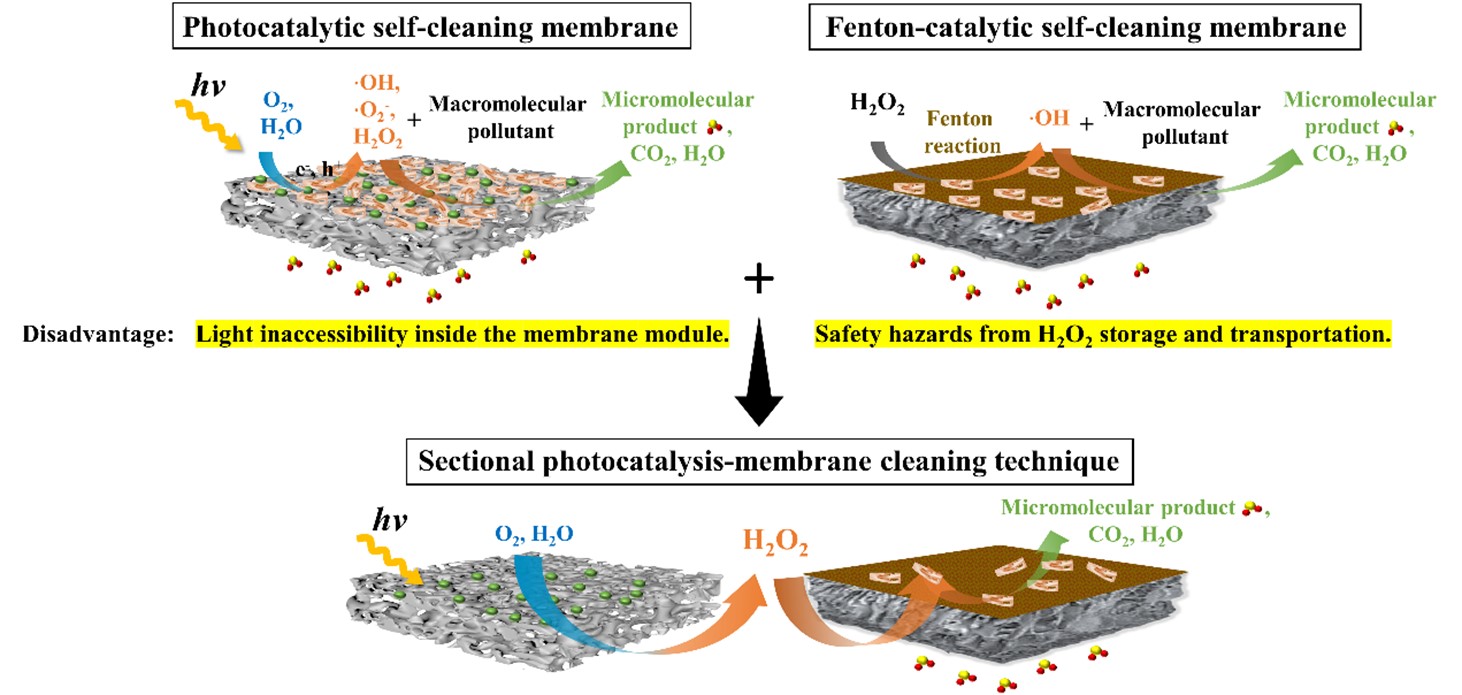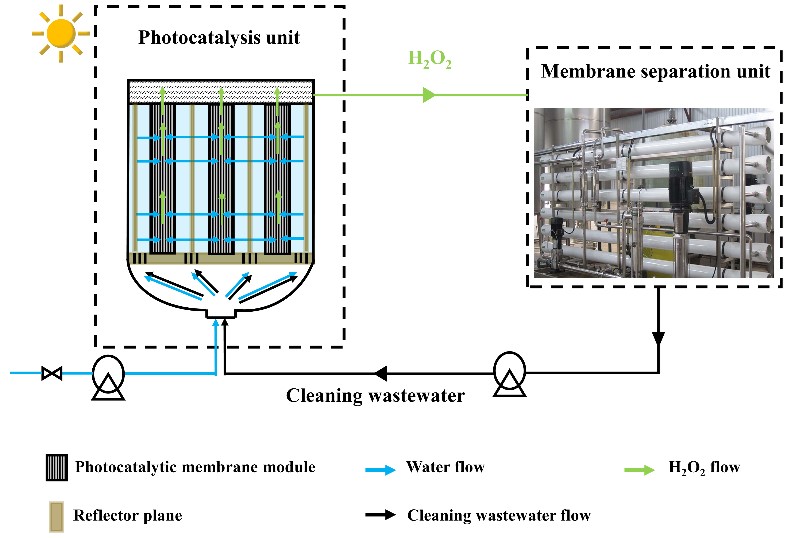Membrane fouling, derived from the interaction between membrane materials and various contaminants, leads to reduction in membrane permselectivity and limits long-term continuous application of the membrane.
The integration of photocatalysis and membrane separation is a promising approach for foulant degradation due to its energy-saving capacity and high efficiency.
Prof. WAN Yinhua and his team from the Institute of Process Engineering (IPE) of the Chinese Academy of Sciences have proposed a new photocatalysis-membrane system to address membrane fouling.
The study was published in the Journal of Membrane Science on Sept. 16 (DOI: 10.1016/j.memsci.2021.119859).
Industrialization of previously reported photocatalytic membranes that integrate photocatalysis with membrane separation has been problematic due to the difficulty in setting up the light source in the membrane module under high pressure. At the same time, the Fenton catalytic membrane, prepared by immobilizing a Fenton-like catalyst on the separation membrane, requires H2O2 to trigger the reaction; however, the transportation and storage of H2O2 is a real safety hazard.
In this newly proposed system, the sole purpose of the photocatalysis unit, in which the photocatalysts are immobilized on a support (such as stainless-steel wire mesh, transparent film or porous membrane), is to generate reactive oxygen species (ROS). It is set up separately from the membrane separation unit, in which a Fenton-like catalyst immobilized membrane is used as a separation membrane.
During the operation, water is pumped into the photocatalysis unit as a resource for H2O2 production. Since the photocatalysis unit has sole responsibility for H2O2 generation, its overall efficiency can be improved by hassle-free engineering of photocatalysts. The photogenerated H2O2 in the photocatalysis unit is transferred to the separation membrane to trigger Fenton-like catalysis, which can degrade foulants on the membrane by ROS and accelerate the release of the oxidized foulants from the membrane.
"This sectional photocatalysis-membrane coupling system overcomes the limitation of light inaccessibility in a conventional one-piece photocatalytic membrane system and reduces the transportation and storage risk of H2O2," said Prof. LUO Jianquan from IPE, the corresponding author of the study. "It also offers the possibility for sustainable membrane fouling control in large-scale application."

Fig. 1 Schematic illustration of single photocatalytic self-cleaning membrane, single Fenton-catalytic self-cleaning membrane, and sectional photocatalysis-membrane cleaning technique, respectively. (Image by ZHANG Huiru)

Fig. 2 Schematic of sectional photocatalysis-membrane cleaning technique prototype (Image by ZHANG Huiru)
Media Contact:
LI Xiangyu
Public Information Officer
Institute of Process Engineering, Chinese Academy of Sciences, Beijing 100190, P. R. China.
E-mail: xiangyuli@ipe.ac.cn
Tel: 86-10-82544826
 Search
Search




 京公网安备110402500047号
京公网安备110402500047号